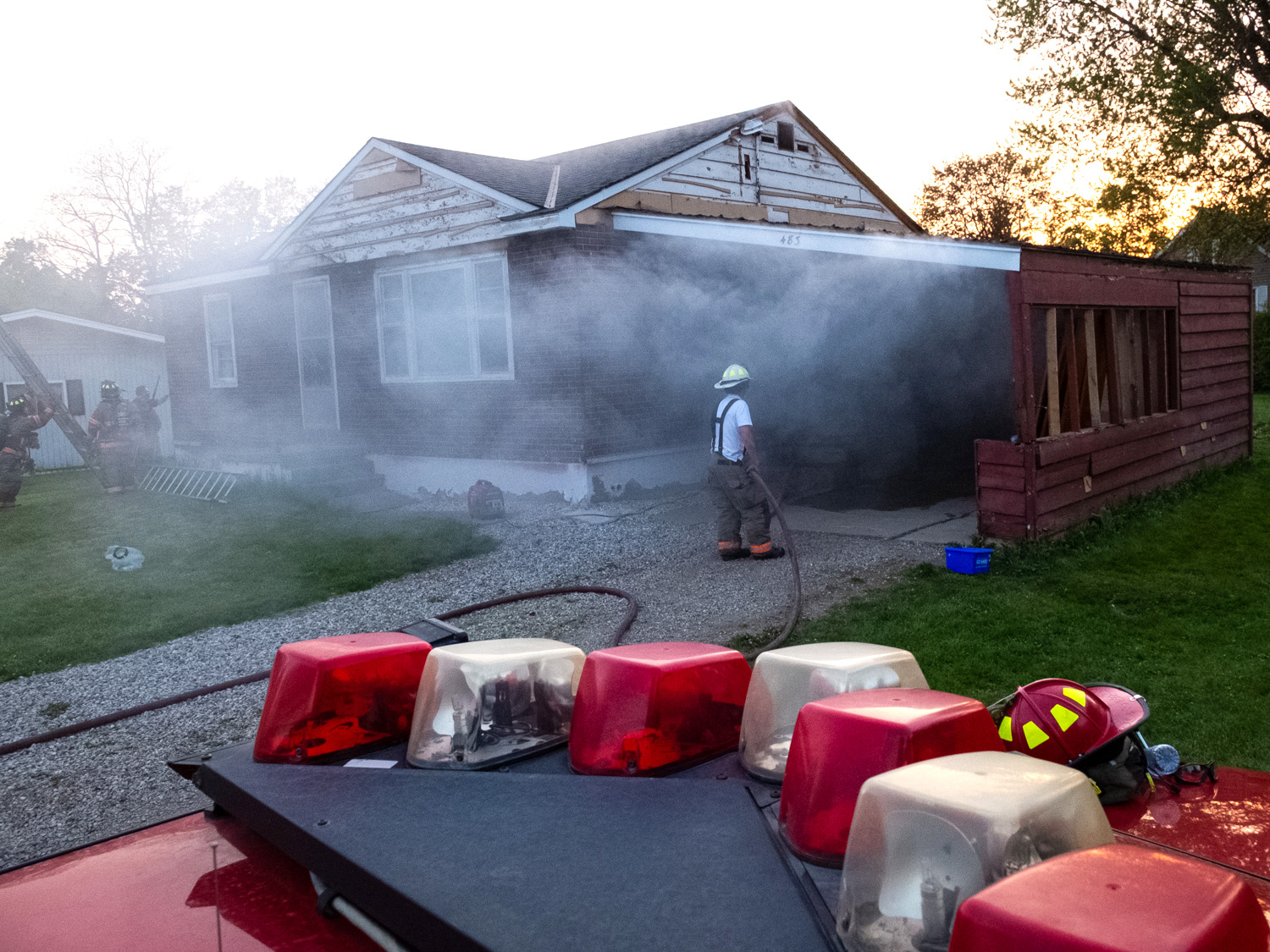FERGUS – The warm, golden hues of evening sun rays are caught in smoke billowing from the roof of a St. George Street home on May 18.
Centre Wellington Fire and Rescue volunteer firefighters are on the house’s roof — shingle and wood debris spit from the teeth of a whirling chainsaw as firefighters gnaw through, creating what’s known as a “vertical vent” to free the buildup of hot gasses below.
Above, the buzz of drones — a DJI Enterprise equipped with a thermal imaging camera and spotlight, and a DJI Maverik with a video camera — fills the air.
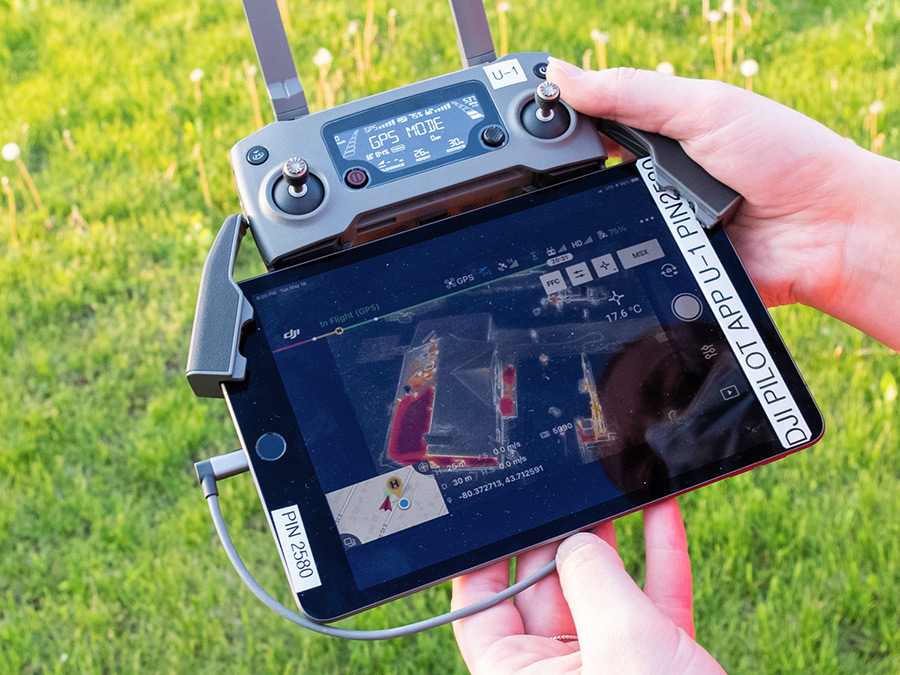
Centre Wellington Fire and Rescue Service volunteer firefighter Kate Parish displays an iPad showing an image from the service’s drone equipped with a thermal imaging camera. Photos by Jordan Snobelen
Back on the ground, members of another fire crew barrel their way through a wedged-open window at the rear of the roughly 800-square-foot house using a “VEIS” tactic: vent, enter, isolate and search.
Fire fighters open a room’s exterior window to vent and enter through it, isolating the room by closing doors and then searching it. Rather than starting at a building’s front door and having to work through fire, they can go right to source of where somebody is.
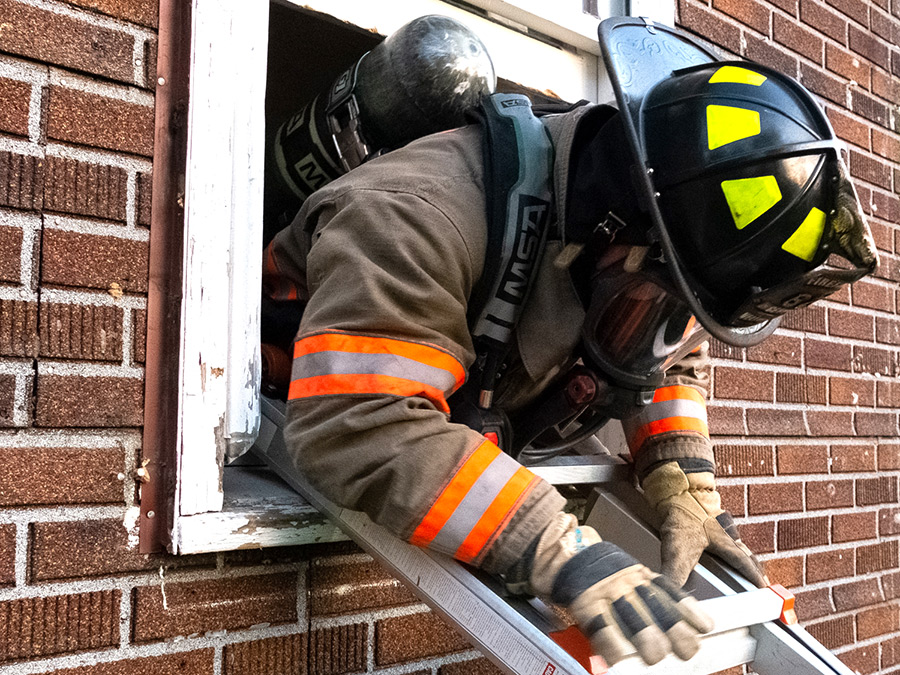
A Centre Wellington Fire and Rescue Service volunteer firefighter is seen emerging from a house after practicing a “VEIS” tactic.
Under a garage overhang around the side of the house, a three-firefighter attack crew methodically breaches a door, funnelling a 1.75-inch hose through the doorway to drown the fire at its source and find any trapped occupants.
The last firefighter in directs the two in front, keeping an eye on the bigger picture and working the two-way radio; the second hauls hose, supporting the first firefighter operating the hose nozzle.
Only in this case, the source of the “fire” is simply a smoke generating machine.
And the sole occupant, Rescue Randy, is the department’s 100-pound dummy, who always seems to find himself lodged in a tough spot.
As with all of the department’s training scenarios, Randy is dragged by a firefighter donning 80 pounds of “turnout gear” and liberated to fresh air before being flung back into the thick of it once again.
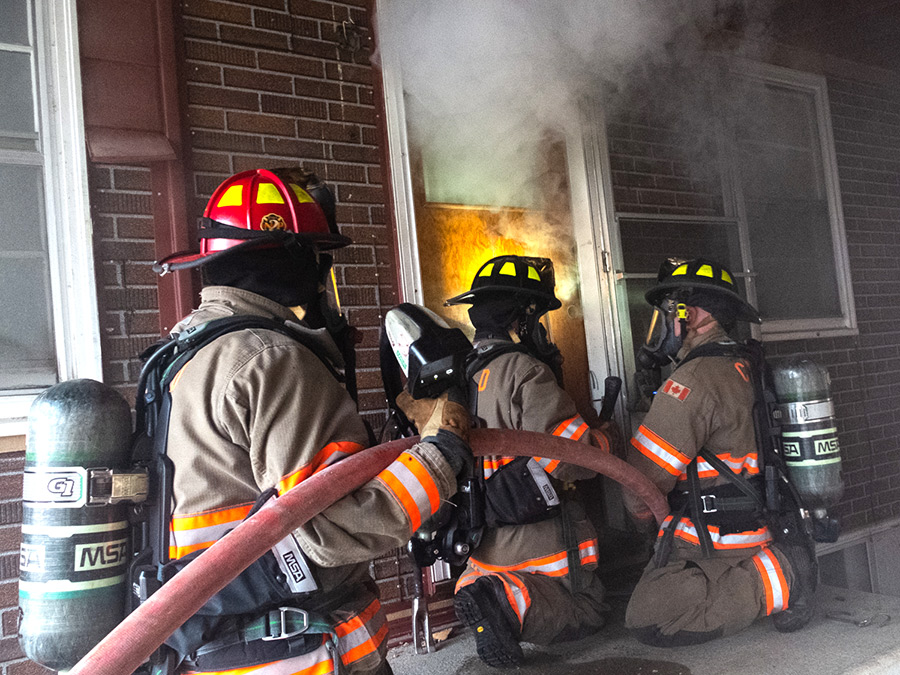
Centre Wellington Fire and Rescue Service volunteer firefighters prepare to breach a home in a practice scenario.
Unlike larger metropolitan services, the department doesn’t have its own “burn building” in which to practice scenarios.
Centre Wellington firefighters either head out of town to train with live fire at the Waterloo Region Emergency Services Training and Research Centre, or as is the case on this Tuesday night, they practice within local buildings marked for demolition.
By the time you read this, 483 St. George St. E., where 15 of the Elora station’s volunteers are training, will no longer be standing.
“We generally find out about places like this that come around because the owner has applied to the township for a demolition permit,” deputy fire chief Jonathan Karn explained.
Karn then contacts the property owner and proposes allowing the department to use the fated building.
“We don’t often get a chance to cut the roofs off from houses, so this is actually a chance to practice vertical ventilation,” he said.
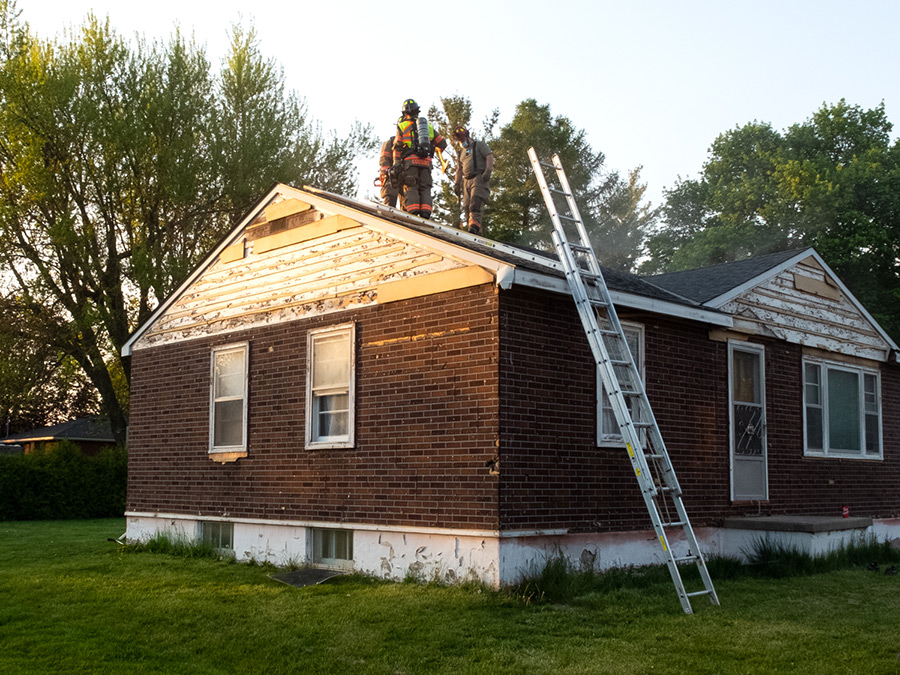
Centre Wellington firefighters are seen on the rooftop of a house used for training in Fergus.
Nearby residents Michelle and Scott Breen had noticed the commotion for the past week before their curiosity led them to check out the scene.
“It’s resourceful to be using houses that are going to be demolished,” Michelle remarked as the couple, newly moved from Colorado, looked on.
Since the beginning of the pandemic, training has been sporadic at best for the department, which has erred on the side of caution.
There were three consecutive months without in-person training before the department got a couple rounds in at the end of March of this year. Then training was paused once again in April.
Fighting fires isn’t exactly a solo or virtual exercise, but Karn said the department did its best to move training behind the screen, recording equipment training videos and incorporating online first-aid theory and training seminars.
Firetruck cabs are also currently limited to four persons despite being able to accommodate six — and masks and eye protection, in accordance with public health guidelines, must also be worn.
A volunteer unknowingly transmitting the virus is Karn’s biggest concern with in-person training.
“We could very easily shut down an entire fire hall,” he said.
But so much of what firefighters do is hands-on.
“We can’t accomplish everything online,” he said. “They’re perishable skills in some respects; they become rusty, so you need to maintain your skills.”
Training in person also allows the volunteers to understand where their strengths and weaknesses lie as a collective unit.
“We train together in those groups because you’re working to accomplish a task as a group,” Karn said.
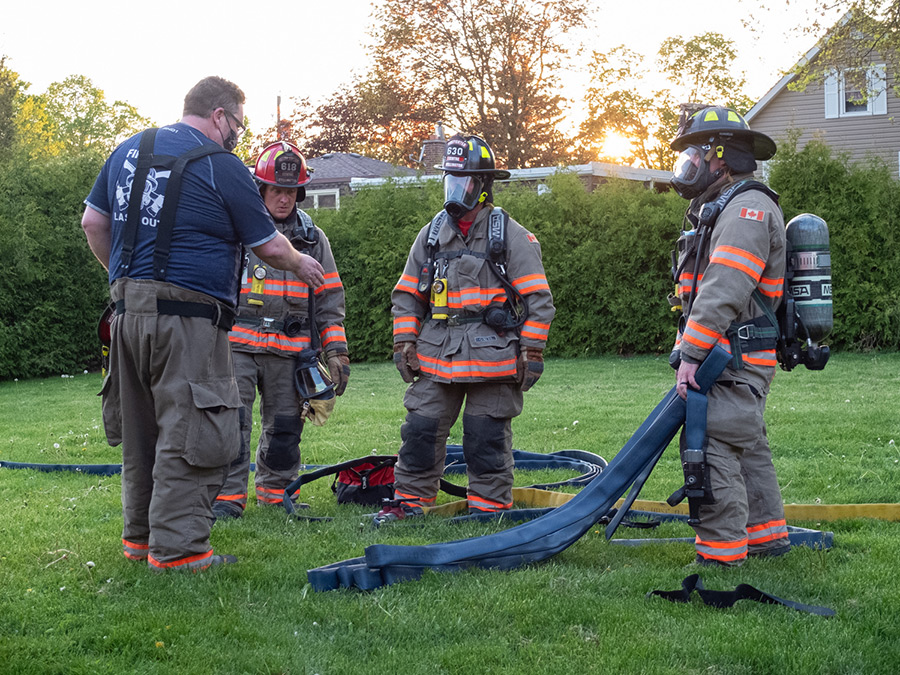
Centre Wellington volunteer firefighters debrief after running a training scenario.
Pre-pandemic, the 66-strong department, with stations in Fergus and Elora, would typically train three nights per week.
Now, the department splits training up between four days during weeks they can train, with the volunteers split into smaller groups.
After running a scenario, crews removed their stifling gear, and with beads of sweat dripping from their faces in the summer-like heat, they debrief on how things went and where they could improve.
The department attends 550 to 600 calls per year and about one structure fire per month, according to Karn.
He says the department is still “young,” with a lot of recent hires over the last couple years who are still gaining experience handling the gamut of tools available to help fight fires, remove trapped persons from vehicles and perform rope rescues.
“All of these guys will work a day job somewhere, and they’ve gone home, had a quick bite to eat and come here and go through all this,” Karn said, praising their commitment.




